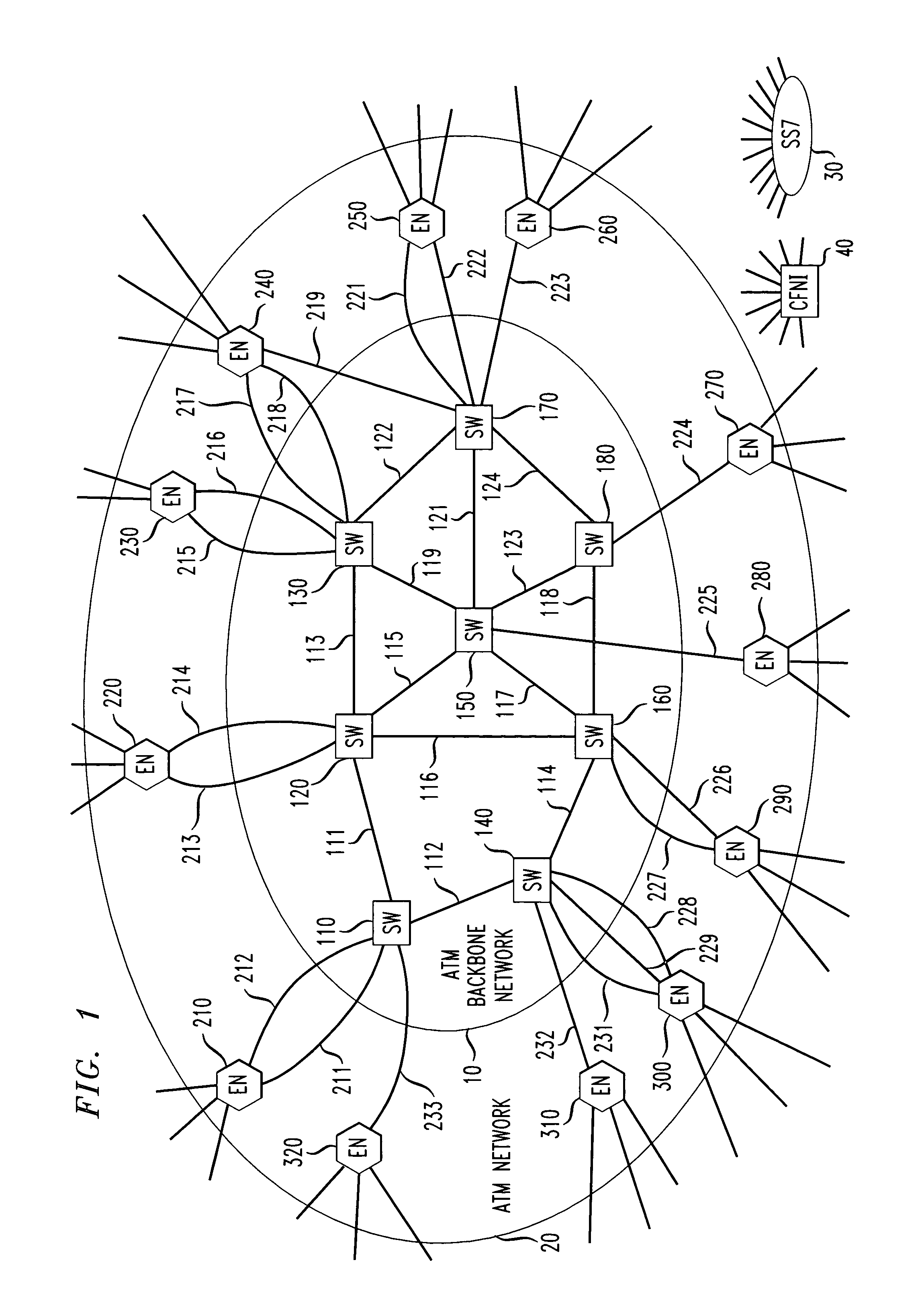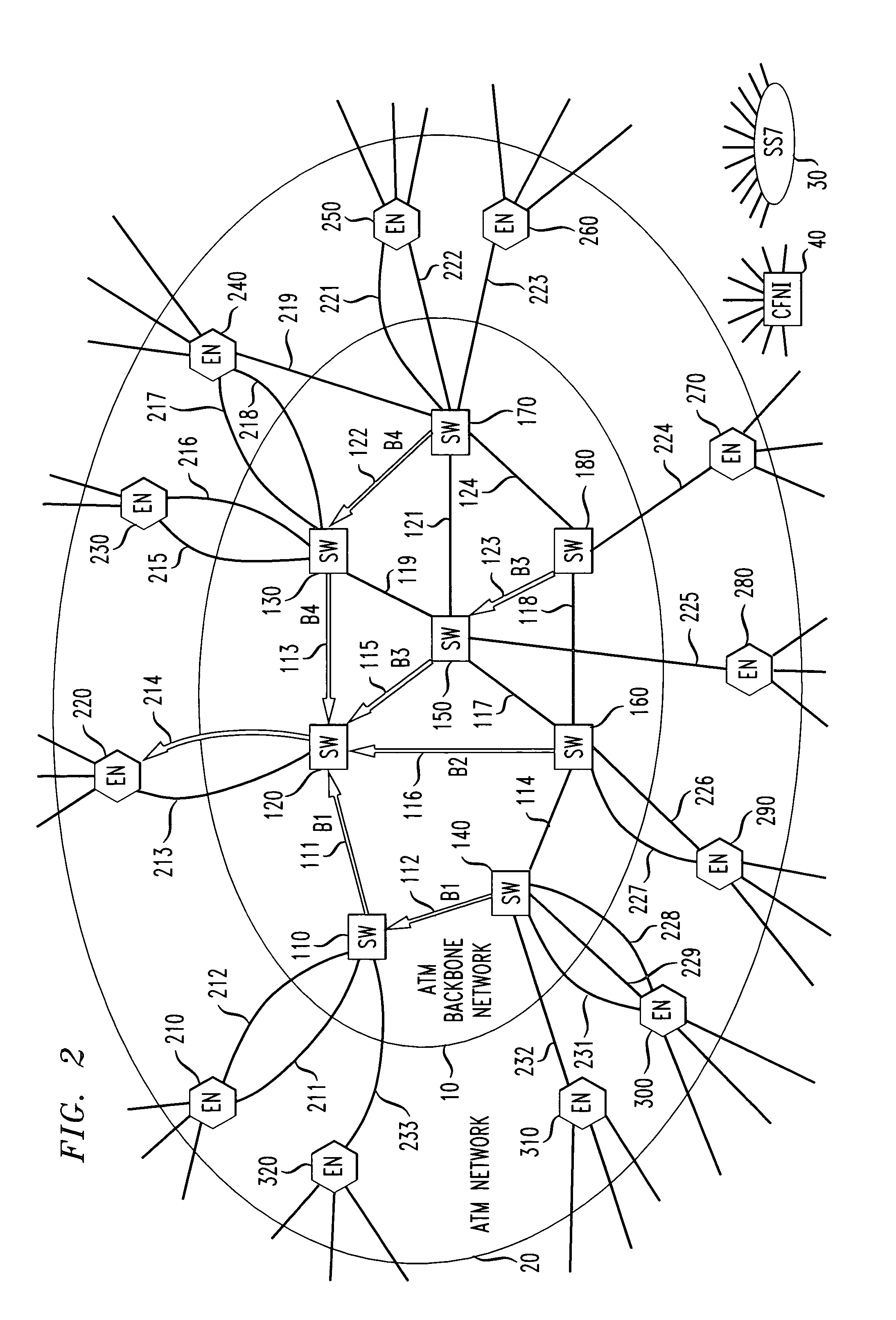Integrated switching and facility networks
a facility network and integrated switching technology, applied in the field of telecommunications, can solve the problems of high network operation cost, limited bandwidth sharing, and significant inefficiencies, and achieve the effect of simplifying network operations
- Summary
- Abstract
- Description
- Claims
- Application Information
AI Technical Summary
Benefits of technology
Problems solved by technology
Method used
Image
Examples
example
A Call Flow Using the RSD
[0137]FIG. 8 shows a call flow between an edge node 802 and an RSD 804 showing how the edge node obtains a VCI for the call from the RSD. For example, edge node 802 is analogous to an edge node 620 of FIG. 6, and RSD 804 is analogous to CRSDS 630 of FIG. 6. The message protocol used for RSD queries might be SS7, or it could be any other data network protocol.
[0138]In a first step 810, edge node 802 receives a new call / communication for a session.
[0139]In a second step 820, edge node 802 sends source and destination information to RSD 804. Depending on the features supported by RSD 804, edge node 802 may send additional information, such as the priority of the session or the bandwidth required by the call / communication.
[0140]In a third step 830, RSD 804 receives the origin and destination information from edge node 802, and any other information sent as well.
[0141]In a fourth step 840, RSD 804 selects a route for the session, based on the source and destinati...
PUM
 Login to View More
Login to View More Abstract
Description
Claims
Application Information
 Login to View More
Login to View More - R&D
- Intellectual Property
- Life Sciences
- Materials
- Tech Scout
- Unparalleled Data Quality
- Higher Quality Content
- 60% Fewer Hallucinations
Browse by: Latest US Patents, China's latest patents, Technical Efficacy Thesaurus, Application Domain, Technology Topic, Popular Technical Reports.
© 2025 PatSnap. All rights reserved.Legal|Privacy policy|Modern Slavery Act Transparency Statement|Sitemap|About US| Contact US: help@patsnap.com



